I got my introduction to 3D graphics when I joined Rockwell International’s F-5 Upgrade program in 1991. I was part of the IR&D (internal research and development) team building a Systems Integration Facility (SIF) for prototyping F-5 (and, later, F-4) advanced avionics for sale to other (friendly) countries.
The centerpiece of the SIF was a man-in-the-loop fight simulator featuring a full sized cockpit, upgraded cockpit displays and a large, wrap around “out the window” (OTW) display. The OTW display was powered by a Silicon Graphics Reality Engine running Gemini’s GVS software. The wrap around display was generated with 3 projectors. The cockpit displays were powered by Virtual Prototype’s VAPS running on other SGI workstations.
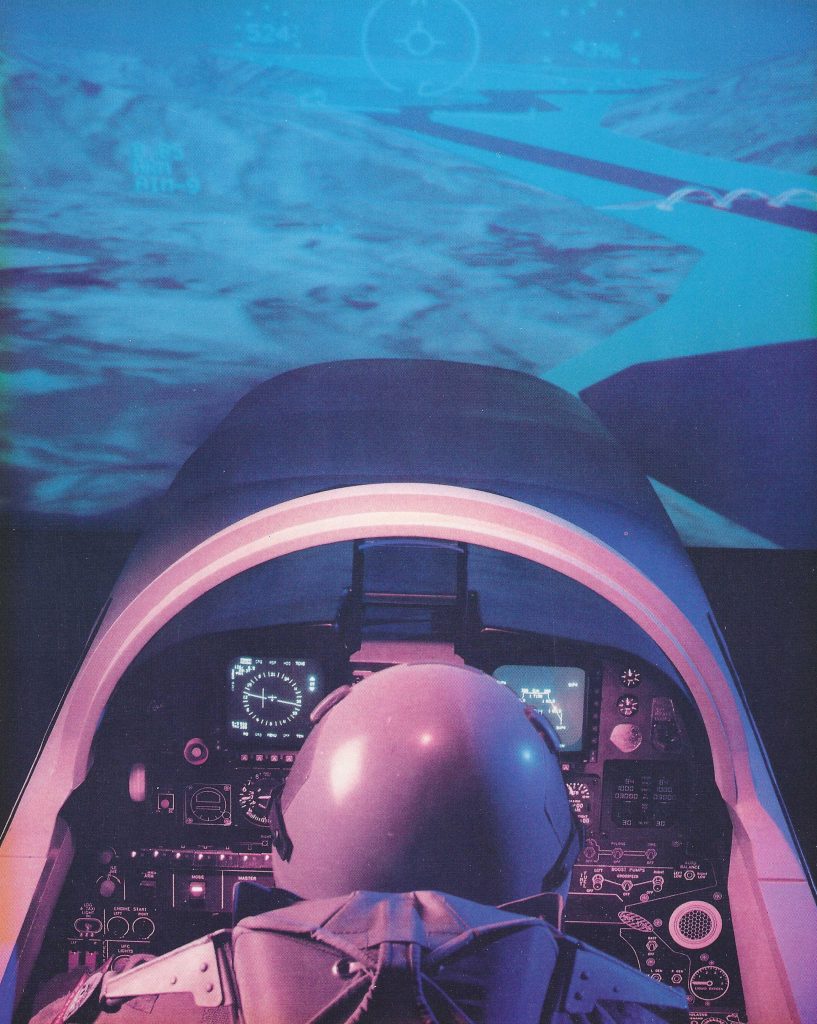
As you can see on the image above, we were also able to simulate the Heads Up Display (HUD) by overlaying the VAPS graphics on the GVS graphic. The multifunction displays (MFDs) in the cockpit were driven by VAPS on special monitors powered by SGI workstations.
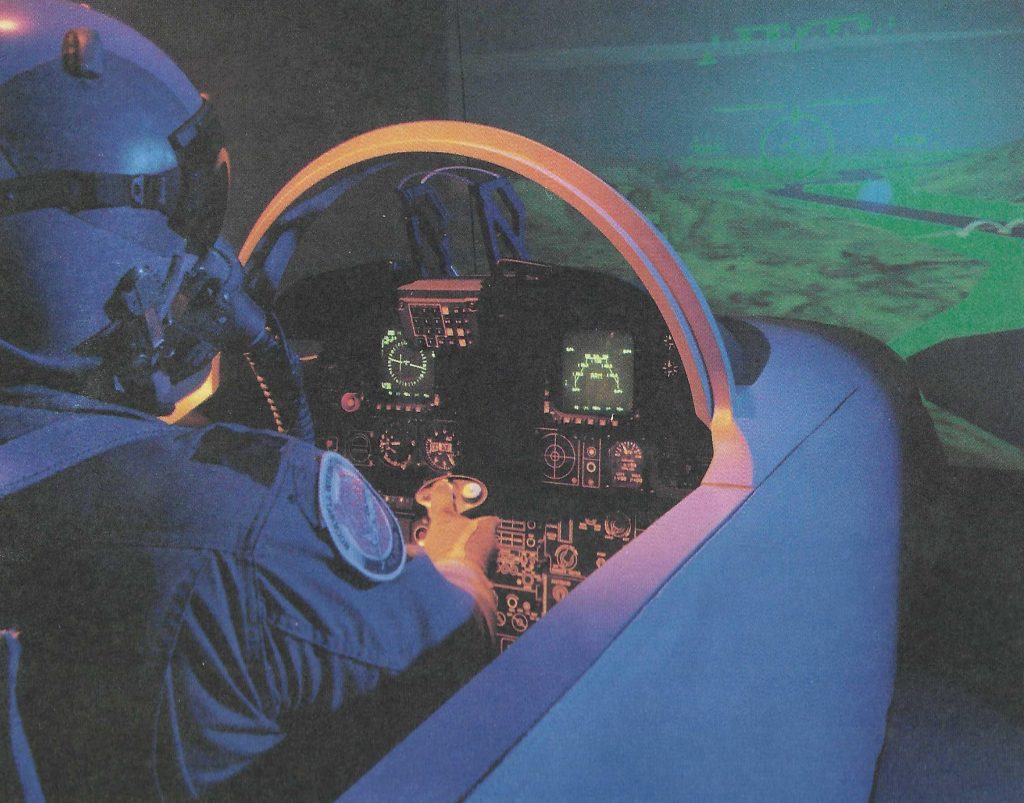
In the image above, you can see the flight stick with upgraded HOTAS (“hands on stick and throttle”) functionality. We were able to pick up all of the HOTAS functions and MFD buttons in the simulation software.
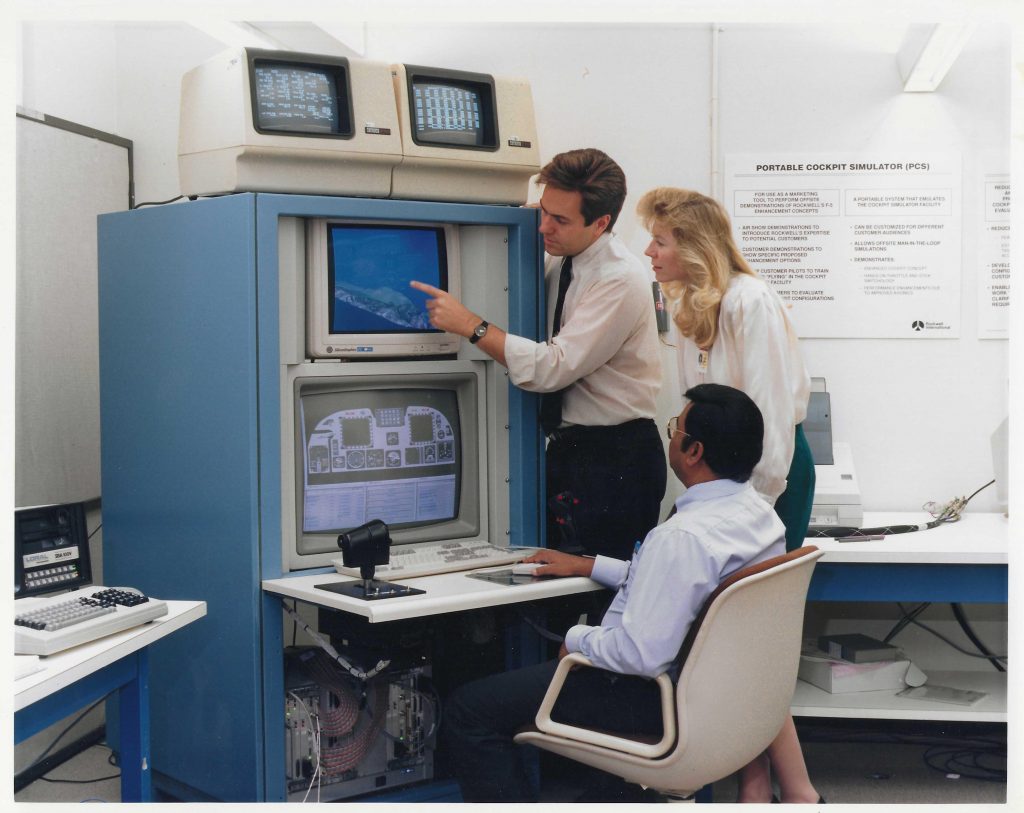
We also had a “portable” version of the simulation that could function at a workstation (Portable Cockpit Simulator or PCS). The HOTAS was the same as in the cockpit. We could monitor the “shared memory” interfaces on the VT100 monitors on top of the cabinet. (That is me dramatically pointing to the out-the-window display.)
In the cage below the monitors was a VME enclosure which brought in signal from the various hardware components and also allowed us to integrate real 1553 devices (like an Inertial Navigation System – INS)
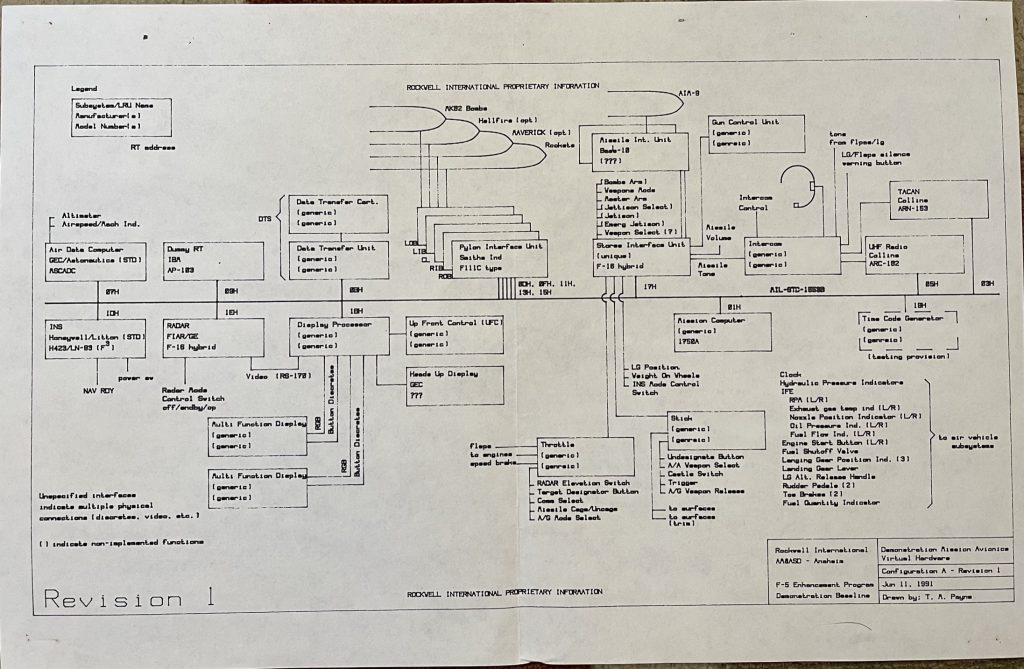
This is the onboard 1553 architecture we were trying to simulate, including all of the flight instruments…as well as the weapon systems interfaces for things like pylon mount Mark 82 bombs, rockets, Hellfire, Marverick and AIM missiles. Also, a “Gun Control Unit”.
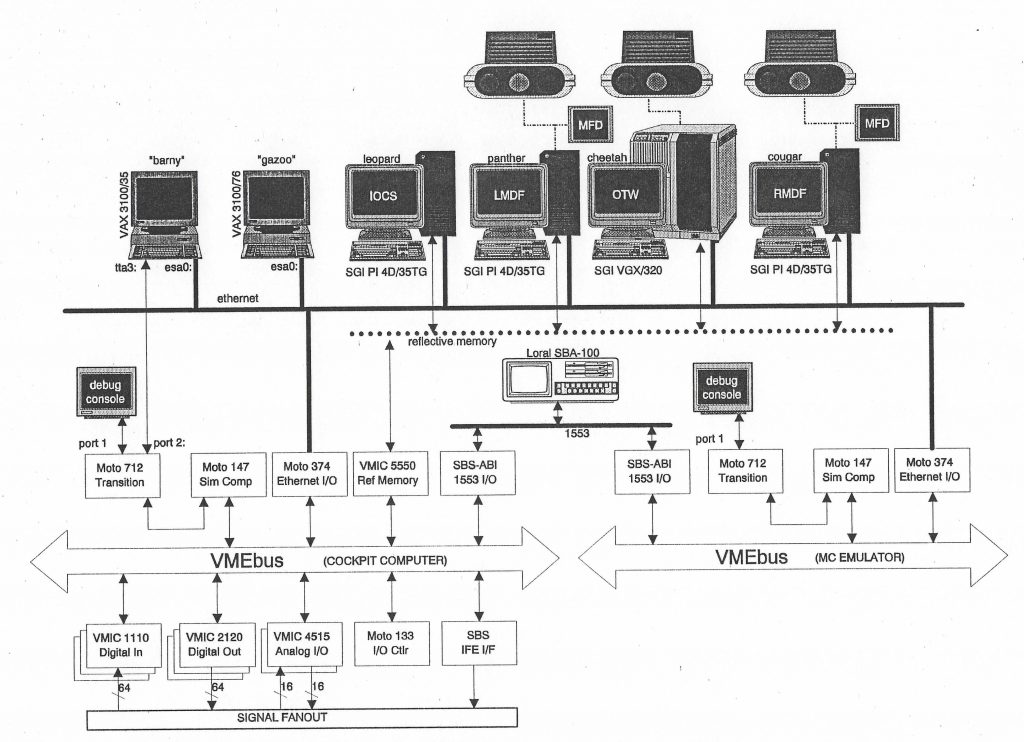
The diagram above illustrates the architecture of the SIF computers, including the SGI workstations, some VAXstations for software development, the VME, 1553 and “reflective” (shared) memory interface.
The SGI VGX was our “poor man’s” reality engine. I am pretty sure we later replaced it later with a full refrigerator-size Reality Engine.
Here are some additional pictures of the SIF:
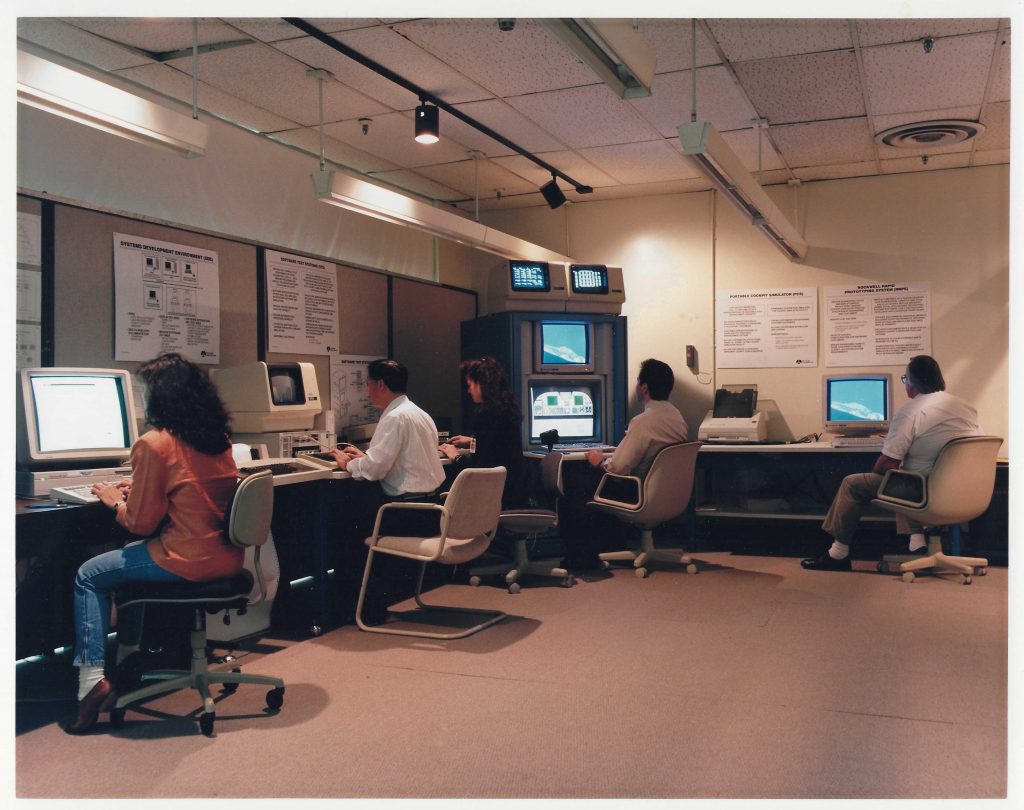
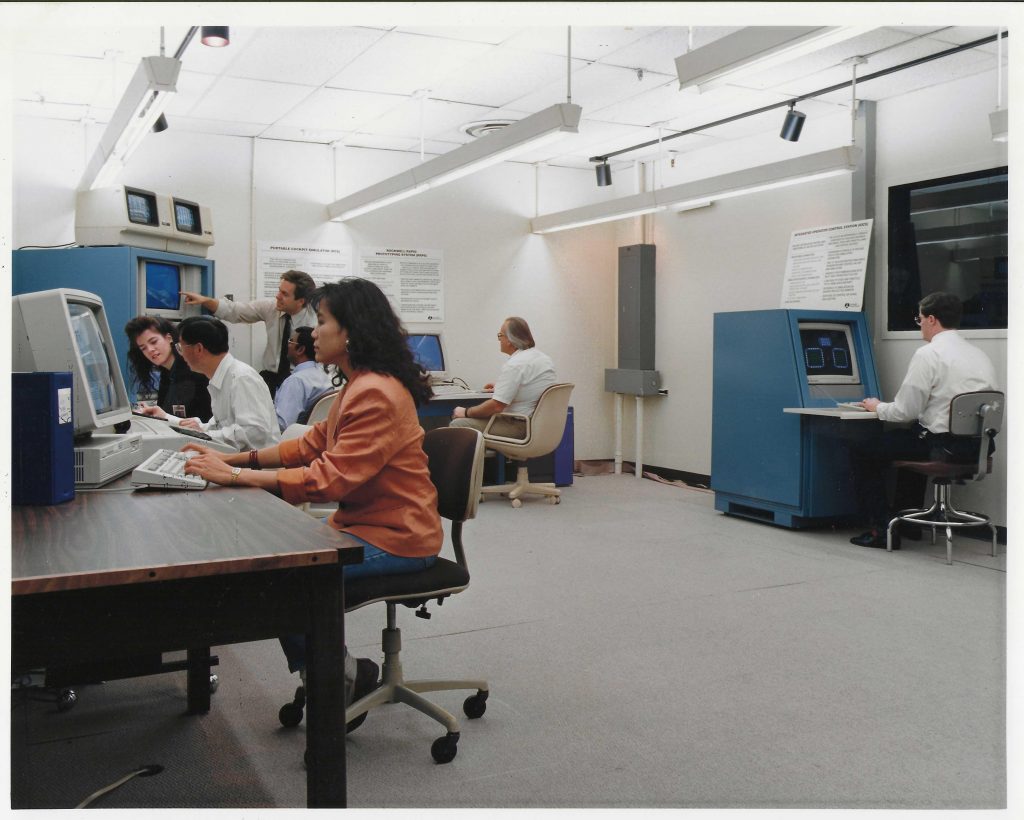
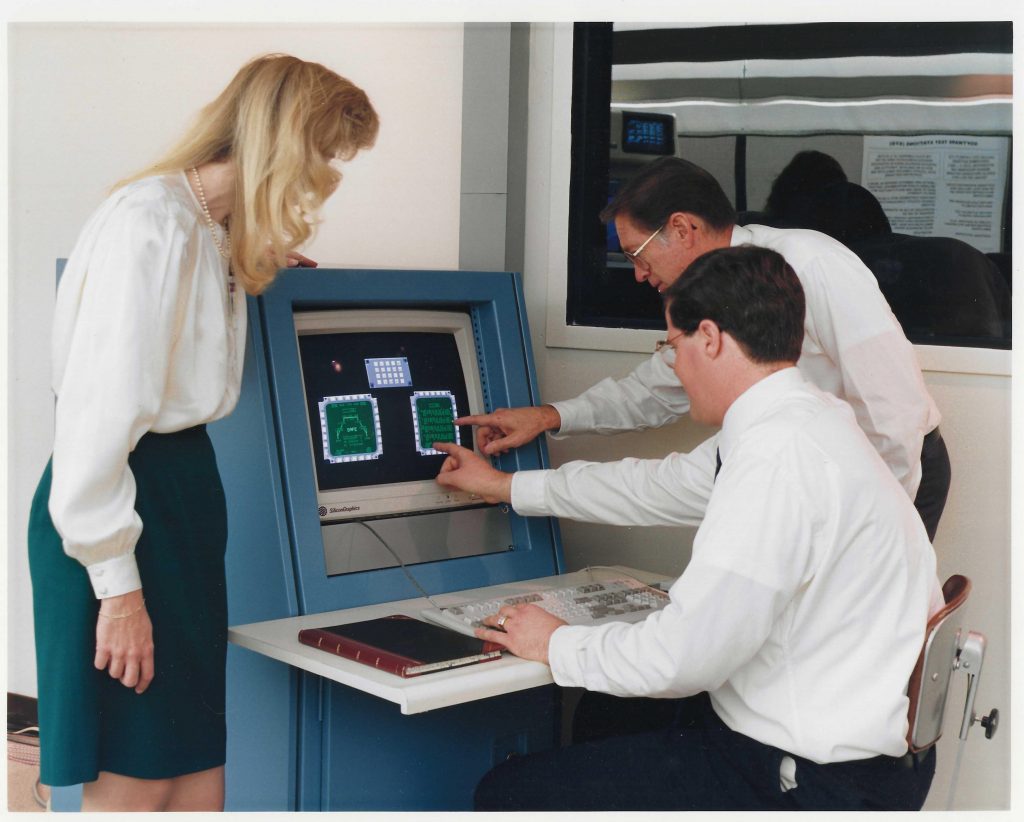
This unit was a yet again scalled down workstation for prototyping cockpit displays. (Basically, just an SGI workstation in a military-style cabinet.)
These are some PR illustrations of the overall SIF…but we never really built more that the facility in the upper left corner (the Cockpit Simulation Facility and the Avionics Integration Laboratory).
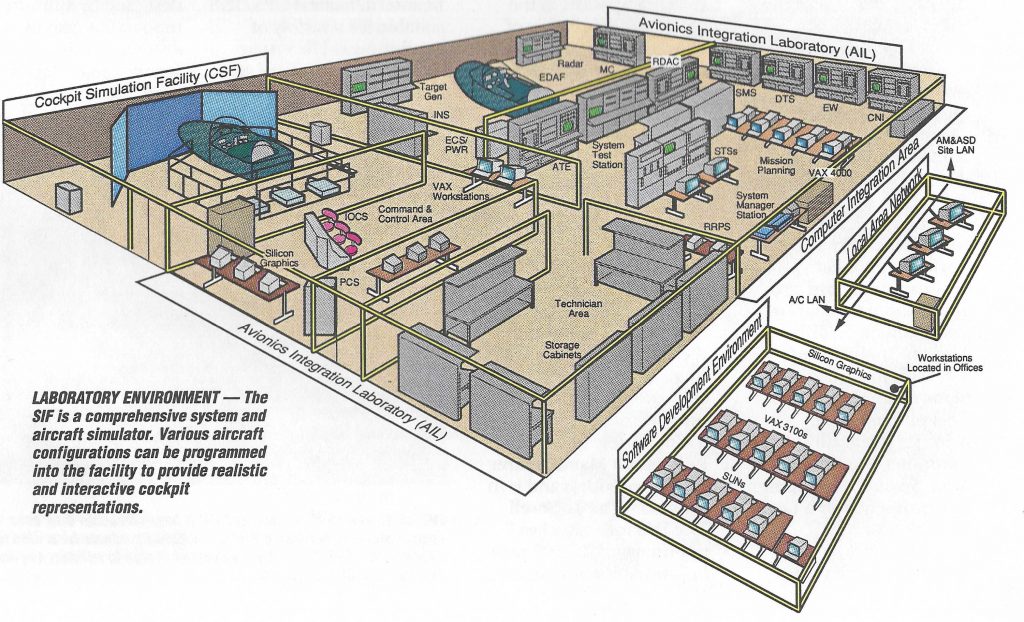
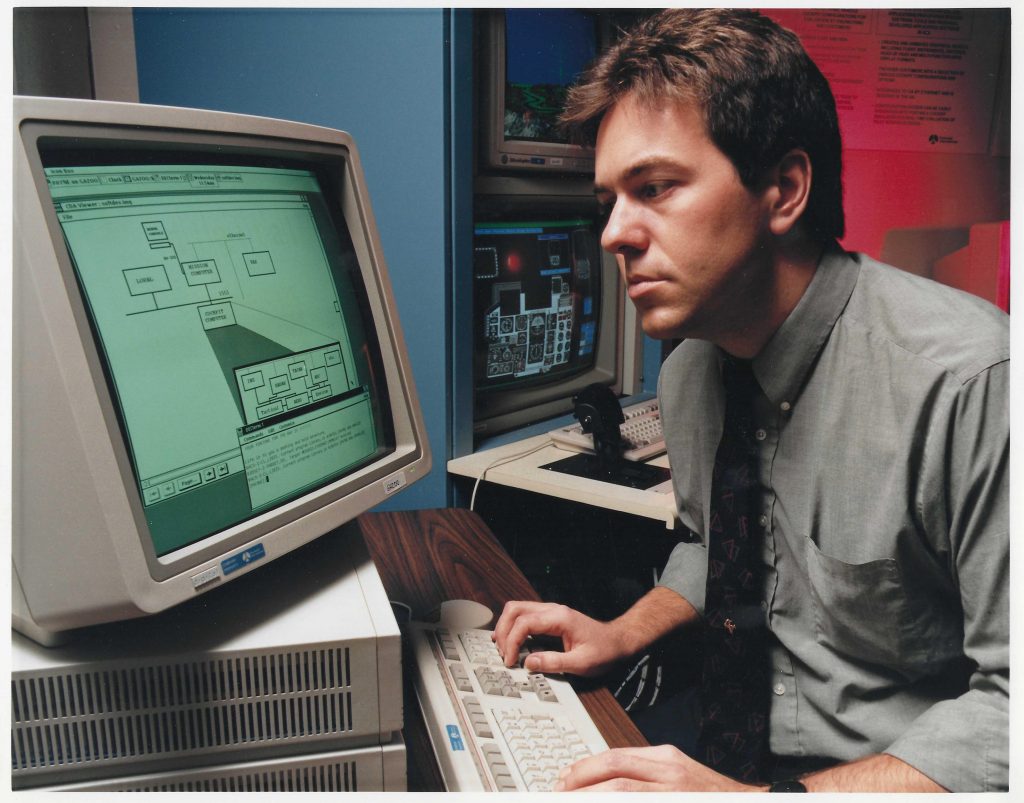
Many of these photos were taken for press releases and other documentation. They are all staged and posed. I remember it being very corny at the time. For example, George, my manager, spent very little time in the lab and certainly didn’t know how to operate a vT100.
The photo above (me!) was “mounted” on a foam core block and was on display as part of a collage in the Rockwell Anaheim facility’s entrance lobby. When is was finally taken down, I was able to retrieve the photo as a souvenir.
On the display of “Gazoo”, one of the lab’s VAXstations, is another architecture diagram. It appears I am using “CDA Viewer” which was just a simple way of getting an impressive image on the screen. At the time, I think we were using Interleaf for creating such graphics.
